
image courtesy of the New York Botanical Garden all rights reserved
.
All content included on this site such as text, graphics and images is protected by U.S and international copyright law.
The compilation of all content on this site is the exclusive property of the site copyright holder.
Container Gardening, an NYBG Plant Studio Course
Week Three: ends on 24 April at midnight
These Plant Studio courses are something new. Since they are online, students near and far can participate without driving into the city. In fact, one of the students in the Container Gardening course I am auditing lives in Minnesota! Because the lectures remain online for the duration of the course students can watch and re-watch the videos anytime during the duration of the course. I do think it can be an interesting, very viable idea.
Container Gardening is intended to teach students how to design, plant, and care for a container garden that is both functional and full of four-season beauty, whether it is on their home patio, terrace, or deck, or in their apartment. The course will teach the basics of choosing and using materials like potting soil and plants, as well as easy maintenance skills needed to make container planting a thriving success.
Students wishing to receive a digital credential at the end of the course are required to complete three of the four discussion boards, along with a final project.
To begin their project students are advised to
Create a mood board. Look for inspiration in their neighborhood, at a nursery or gardening center, in a magazine.

image courtesy of the New York Botanical Garden all rights reserved
Explore online with a Google search, as well as the New York Botanical Garden's collections. Then choose at least
5 images for the mood board. Post the mood board, as well as a 100-150 word text on what's inspiring you and why.
Week 3 of Container Gardening: Designing Compelling Containers
The role that containers play in gardens and the importance of container gardening as a subset of garden design.
Part 3.1 Brief History of Container Gardening
With a focus on various materials used for containers, Daryl begins his talk far back in history
starting with the use of terra cotta by ancient Eqyptians and the Romans, wooden containers,

A bay laurel standard in wooden tub at the Palais Het Loo in Appeldorn, the Netherlands
and then takes his presentation up to today with continued use of terra cotta, wood, and now plastics.
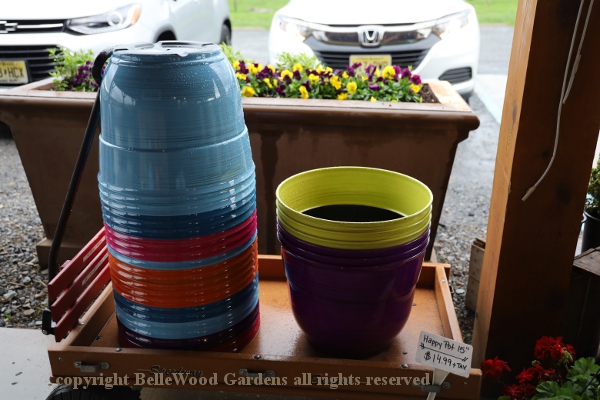
After viewing this module, as I looked for images I was fascinated by a pair I had taken that show
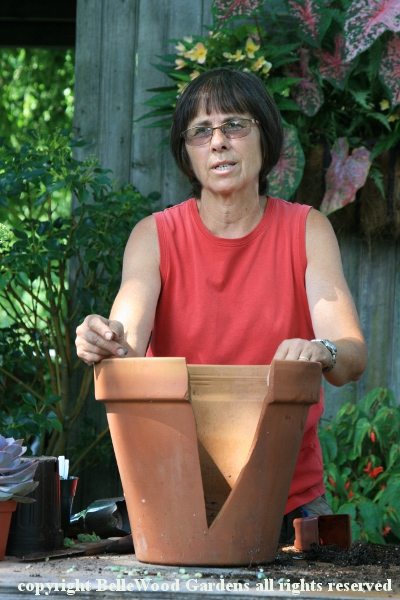 .
.
the clever use of a broken clay pot as an attractive planter. Terra cotta is a fragile material! and
there's only so much need for fragments to be used as crocking over drain holes of other pots.
Goes to show that there will always be options and possibilities. But keep the location in mind.
3.2 Designing with the Setting in Mind
Several things to keep in mind: first think about container style, material, and color as these are most important. Match pot placement to type and style of location (traditional / contemporary.) Don't forget about scale. Some options include entryway or doorway,
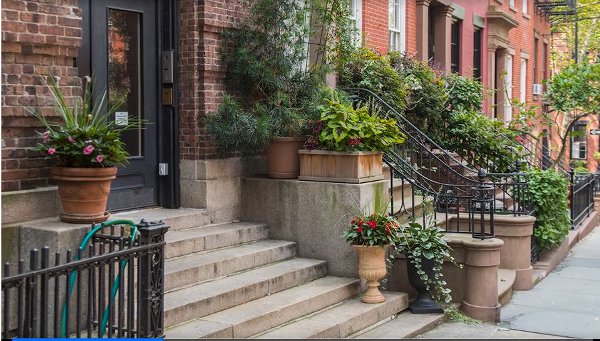
image courtesy New York Botanical Garden all rights reserved
Here, steps are used as staging. Daryl advises that seasonal interest might range from
early spring (pansies, violets and bulbs), then summer (so many annual flowers!) and
on to fall (ornamental kale and cabbage, millet and mums) and even winter where use
of decorative arrangements with evergreen boughs, holly and berries brighten the cold.
Do not overlook the possibilities provided by window boxes, containers located on a porch or on a deck.
In gardens, containers might be placed along a path or even set in a planting bed to disguise bare spots.
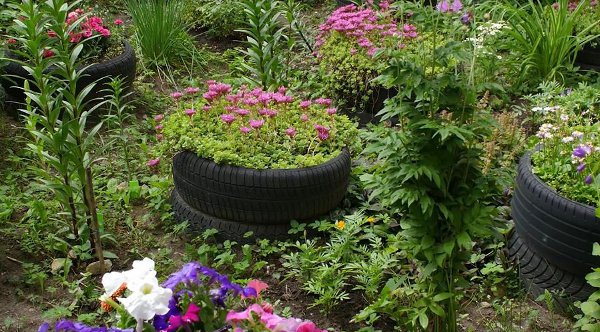
image courtesy New York Botanical Garden all rights reserved
A personal aside. I really prefer the look of tire planters I make, cutting in a zig-zag
in the side wall from the valve stem side of a tire on its rim. When turned inside out

there will be a small "skirt" on the ground and the metal rim becomes a pedestal.
And if the pot is large enough and magnificent in its own right, it might
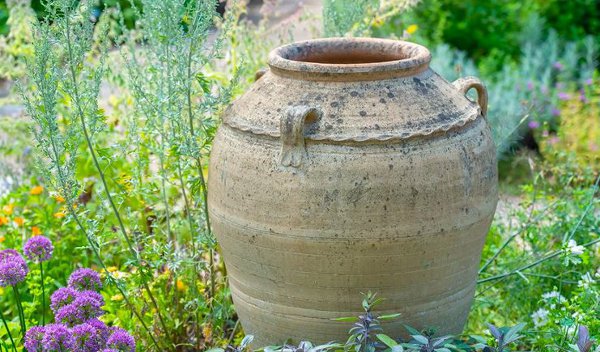
image courtesy New York Botanical Garden all rights reserved
be employed sans soil, sans plants, and instead serve as would some sculpture as an object

of beauty in and of itself, unembellished with anything beyond its form.
3.3 Hands-On Demo of “Thriller, Filler, Spiller” with Guest Gardener Steve Silk
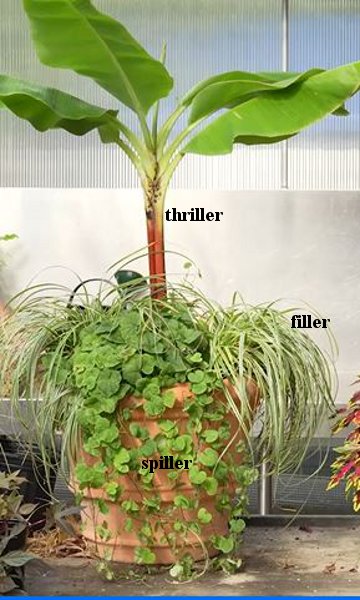
image courtesy New York Botanical Garden, text added by auditor
This week will include a live Zoom Q&A session with Daryl Beyers, course facilitator. At this time he will
offer students the opportunity to discuss their final project and answer their questions. A recording,
specific for this section of the course, will be posted within 3 to 5 days and will not be shared with others.
There is a Reading and Resources list with links to the New York Botanical Garden's
LuEsther T. Mertz Library Guide. Several appropriate publications may be read online.
See Container Gardening, week four
>Container Gardening, week two
and also
Container Gardening, introduction and week one
Gratis registration for this Plant Studio course has been provided by the New York Botanical Garden
Back to Top
Back to April
Back to the main Diary Page